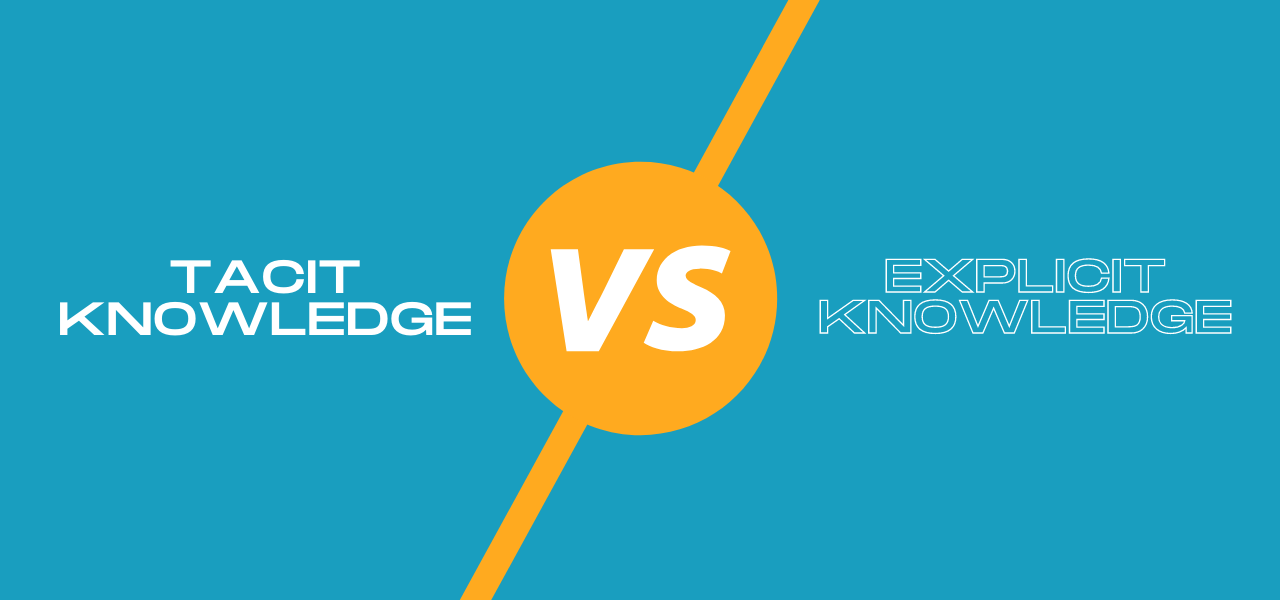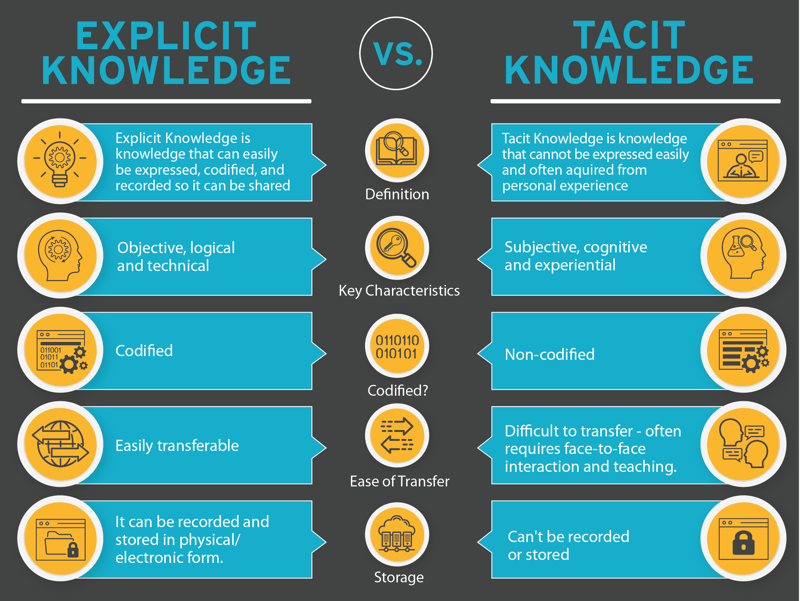
Tacit Knowledge Vs. Explicit Knowledge
This post is focused on the following topics. You may click these links to jump to a specific section:
- What Is Knowledge Management?
- Tacit Knowledge vs. Explicit Knowledge
- Strategies for Making Tacit Knowledge More Explicit
What Is Knowledge Management?
According to the late Carl Frappaolo, one of the leading practitioners and analysts in the knowledge management space, “Knowledge Management is the leveraging of collective wisdom to increase responsiveness and innovation.”

Lew Platt, the former CEO of HP, once noted that “If only HP knew what HP knows, we would be three times more productive.”

Both of these quotes demonstrate why knowledge management is important – it drives innovation and directly contributes to the bottom line. Conversely, not knowing what your organization knows is definitely a recipe for rework, stagnation, and inefficiency.
Encouraging the sharing of employee knowledge to serve enterprise objectives remains an important goal for information professionals. Organizations with successful content -sharing cultures focus on removing barriers to information flow.
Tacit Knowledge vs. Explicit Knowledge
One of the key concepts in knowledge management is differentiating between tacit and explicit knowledge. Tacit knowledge is in someone’s head, and the challenge is to make that knowledge explicit, or codified in recorded form so that it can be shared.
This graphic illustrates some of the differences:
Here's a quick real-world example: Wikipedia notes that facial recognition is one common form of tacit knowledge – you can recognize the face of someone you know among thousands or millions of faces, but you can’t explain all the nuances of how you do that.
Companies that introduce on-the-job training (OJT) or mentoring programs do so in order to pass along the tacit knowledge of their more senior or experienced staff to junior, less-experienced staff.
Strategies for Making Tacit Knowledge More Explicit
Here are a few ways to make tacit knowledge more explicit:
- Incentivize Sharing: There are a number of ways to do this, from recognition to monetary or other tangible rewards. The right incentive will depend on the organizational culture and the individuals involved; some people are more prone to sharing, while others believe that hoarding knowledge will somehow make them indispensable.
- Choose the Right Tools: It’s also important to get the tool "out of the way" of daily processes. One of the major issues with knowledge management has been that the tools have been quite cumbersome and “out of the flow” of work. Consider for example a tech support representative who figures out an innovative solution to a regular customer issue. In order to codify that knowledge in a knowledge base, that rep has to stop what he or she is doing, switch systems or at least screens within the system, laboriously navigate a too-complex taxonomy to find the right place to report the findings, and actually enter them into the right fields, select the applicable product, and on and on and on. Instead, the rep could use a much simpler tool, perhaps a blog or wiki with good search capabilities, that is easier to use and therefore more likely to get used.
- Make The Process Part of the Way of Working: It’s a best practice to have a debrief, or lessons learned, or something similar at key milestones of a project including at the end. At the same time, simple tools like blogs make it easier to keep an ongoing narrative of key developments and decisions.

